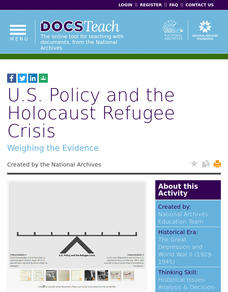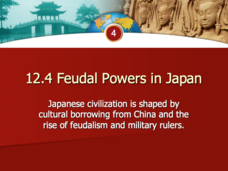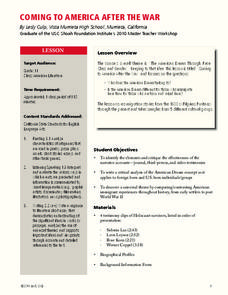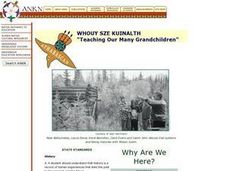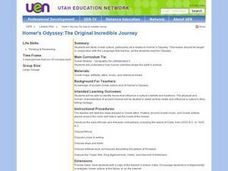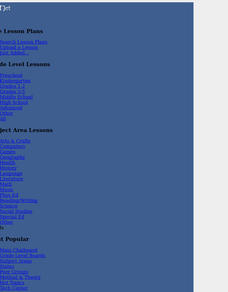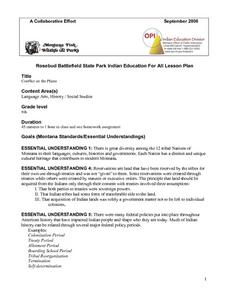Museum of Tolerance
Artifact Research Activity
Artifacts give us the privilege of learning about the past, may it be family, culture, or traditions. Here, class members learn about their family's past with the help of an artifact, or family heirloom. Once an artifact is...
Smithsonian Institution
Us vs. Them: The Chinese Exclusion Act of 1882
Immigration issues are nothing new. An interesting lesson focuses on the racially motivated Chinese Exclusion Act of 1882 and its impact on the Chinese American community. Scholars read articles, analyze political cartoons, and...
DocsTeach
U.S. Policy and the Holocaust Refugee Crisis
How did the United States respond to the Holocaust refugee crisis during World War II? The activity focuses on the United States' foreign policies and the arguments for and against offering assistance. Scholars analyze historical...
Curated OER
India and China Establish Empires: 400 BC - AD 550
Follow India as it journeys through history from the first Buddhist King, Asoka, and the rise of the Mauryan Empire to the establishment of the Gupta Empire 150 year later. This presentation clearly presents historical facts covering 950...
Curated OER
Feudal Powers in Japan
One of the most intriguing eras in world history was the shift to Feudalism in Japan. Examine the causes and effects of Japan's religion, culture, borrowing from China, and rise to Feudalism. Facts are given about the Shogunate, Samauri,...
Curated OER
Egypt
A fascinating presentation on the historical, physical, and cultural geography of Egypt awaits your pupils in this fine PowerPoint. Some excellent photographs of the landscape are included, as well as some fine examples of the Egyptian...
University of Southern California
Coming to America After the War
As part of their exploration of the American dream, class members examine primary source materials to compare immigrant experiences of those arriving early in our country's history to those arriving in the US after World War...
Curated OER
Everyday Objects
Students investigate different cultures based on the everyday objects of that culture. First, they explore Edward W. Nelson, who explored the Alaska region and first learned about the Eskimo culture.
Curated OER
Korean TIP
Students discover different cultures and to compare and contrast those cultures to their own. They celebrate differences in culture as well as to better explore the dynamics of the similarities that make us one people. Students discuss...
Curated OER
United States & Canada: How Are We The Same? How Are We Different?
Students compare and contrast similarities and differences between Canada and the US. In this geography lesson plan, students read various articles and identify similarities and differences in economies, cultures, geography,...
Curated OER
TEACHING OUR MANY GRANDCHILDREN
Young scholars study the connection between where Villages are set up and the natural resources nearby. They interact with Elders to gain historical appreciation of their culture and investigate how their Village came to be located where...
Curated OER
Homer's Odyssey:The Original Incredible Journey
Students study Greek culture, particularly as it relates to Homer's Odyssey. They examine how human activities shape the earth's surface and identify forces that influence a culture's beliefs and traditions. They determine that...
Curated OER
Holidays Around the World
Young scholars explore different cultures by researching holidays around the world, and comparing/contrasting their own customs to those of others; students then present their findings to the class.
Curated OER
Haiku and Beyond: Exploring Genres of Japanese Literature
Fourth graders compare and contrast the literature of Japan as they study the culture, history and geography of the island nation. They read various genres of literature, describe geographic and landform features of Japan, and find...
Curated OER
People in the World-Brazil
Second graders explore information about South America and choose a country to study. They explore culture, food, geography, clothing, language, and recreation of their country. Students visualize their learning by developing a slide...
Curated OER
Demystifying Stereotypes and Understanding
Students investigate cultural diversity. In this Asian cultures lesson, students discuss the attributes of cultures and participate in a classroom simulation that requires them to experience Asian cultural norms and compare them to...
Curated OER
In Perfect Harmony: Teaching the World to Sing
First graders listen to music as the impetus to learn about the concept of Japanese harmony as it is understood in Japanese culture. They use the New Seeker's song, "I'd Like to Teach the World to Sing," to compare America and Japan...
Curated OER
Japan: Yesterday and Today
Students study the geography and culture of Japan and discover important historical events. They look at the religions of Japan. They determine similarities and differences in the lives of teenagers in Japan and the US. They read and...
Curated OER
My Multicultural Self
Learners examine the concept of multiculturalism. In this Teaching Tolerance lesson, students consider their self concepts and world views as they participate in an activity that requires them to describe themselves as well as major...
Curated OER
People Colors
Students are introduced to the concept of multiculturalism. They explore "colors" of people in a book The Colors of Us by Karen Katz. Students experience the ingredients and materials for Rainbow Stew.
Curated OER
Folktales (African American, Chinese, Japanese and Korean)
Students participate in a variety of activities that are concerned with comparing different cultures through the literary genre of folktales. The stories are used to stimulate student interest and provide a context for how a society...
Curated OER
Ethnic Foods Exchange
Students examine the following topics: geography and culture, types of foods, cooking utensils, and cooking techniques used. They present in groups, then prepare ethnic food products.
Curated OER
Conflict On The Plains
Eighth graders investigate the culture and lifestyles of the Lakota Sioux and the Northern Cheyenne tribes. They use a variety of resources for research. They create questions based on information to be used during classroom discussion...
Curated OER
Triangles Are Not Bad
Students explore cultural diversity. In this multiculturalism lesson plan, students participate in a simulation that requires them to consider the implications of belonging to cliques and stereotyping others.


